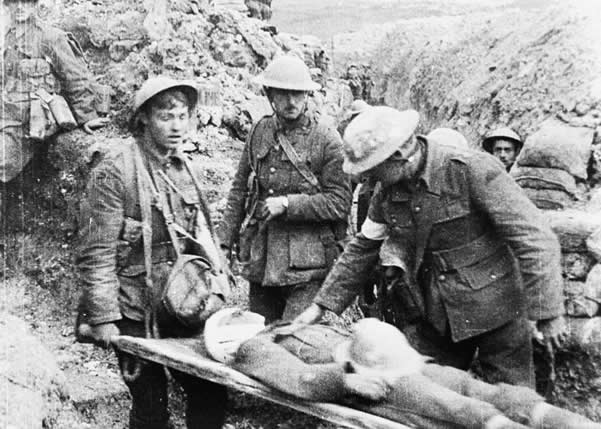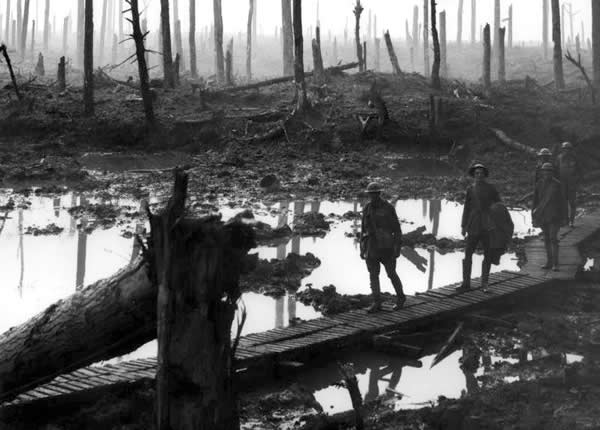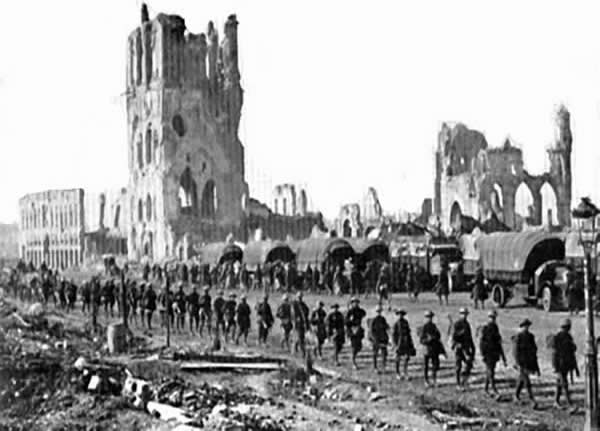1 man from lemsford Died in this battle - He was James Halsey
German Army Chief of Staff Erich von FalkenhaynStrategically located along the roads leading to the Channel ports in Belgian Flanders, the Belgian city of Ypres had been the scene of numerous battles since the sixteenth century. With the German failure at the Battle of the Marne in September 1914 and the subsequent Allied counter attacks, the "Race to the Sea" began.
This so called race ended at the North Sea coast after each army attempted to outflank the other by moving north and west. This area of Flanders, described by one historian as having the dreariest landscape in Western Europe, contained the last gap through which either side could launch a decisive thrust.
By October 1914, the Allies had reached Nieuport on the North Sea coast. The Germans, as a prelude to General Erich von Falkenhayn's Flanders Offensive, captured Antwerp and forced its Belgian defenders back to Nieuport, near Ypres.
Under the command of Field Marshall Sir John French, the British Expeditionary Force (BEF) retreated to Ypres after Antwerp fell. They arrived there between 8 and 19 October to bolster the Belgian and French defence. The Allied position around Ypres took the shape of a small salient in the trench lines because it could best be defended from the low ridge of higher ground to the east, but it was vulnerable to superior German artillery. The BEF held a thirty-five mile long line in the centre of the bulge while the French Army in the area, commanded by General Ferdinand Foch, manned the flanks to the south of the city.
At the outset of the battle, French and Foch both retained the hope of launching an offensive of their own. They believed a coordinated attack would enable the Allies to recapture the industrial city of Lille, Belgium, followed swiftly by Brussels. The new German Army Chief of Staff, Falkenhayn, quickly corrected their optimistic beliefs.
Falkenhayn's Flanders Offensive began on 20 October when he ordered an advance to break through the Allied line and capture the ports of Dunkirk, Calais, and Boulogne. He struck the Belgian defences on the Yser River between Dixmude and Nieuport.
The already weakened Belgian Army fought valiantly, but the German actions forced Belgium's King Albert to open the sluices that held back the sea. On 27 October, the Belgians flooded the land between their positions and the Germans' along the twenty-mile strip of land between Dixmude and Nieuport, creating a two-mile wide water barrier that forced Falkenhayn to halt and reconsider his plans.
British Expeditionary Force Commander-in-Chief Sir John FrenchThe second phase of the Flanders Offensive was a series of assaults against the city of Ypres. To seize it, Falkenhayn had at his disposal the newly assembled Fourth Army (made up of units from the siege of Antwerp and eight new divisions manned by underage recruits) commanded by the Duke of Wurttemberg, a cavalry corps, and Prince Rupprecht of Bavaria's Sixth Army.
These forces gave the Germans a considerable numerical advantage over the BEF's seven infantry divisions (one was held in reserve) and three cavalry divisions. For replacements, General French could only count on a few divisions of Indian troops already en route as reinforcements. The Indian units would soon prove to be outstanding fighters in both offence and defence.
The attacks began along a much narrower front on 31 October when German cavalry drove a smaller British cavalry unit from its position on the Messines Ridge at the southern end of the salient. Shortly thereafter, German forces engaged General Douglas Haig's First Corps further to the north, but a ferocious British counterattack repelled the Germans. Thanks to superior British rifle fire, they were able to hold this sector. The British rifles were so fast and deadly that the Germans mistakenly believed they were facing British machine guns.
On 11 November, two premier German divisions attempted to break the British lines just north of the Menin Road in the Nuns' Woods only four miles from Ypres itself. The Prussian Guards and the 4th Division sought the town of Hooge; the attack lasted all day. Initially successful in creating a breakthrough, the Germans were slow in exploiting their gains. German indecisiveness enabled the British to assemble a motley collection of soldiers (cooks, officer's servants, medical orderlies, clerks, and engineers) who stemmed the enemy advance and eventually drove them back to their own lines.
Fighting around Ypres would linger on until 22 November when the onset of winter weather forced a break in hostilities. The combat during this engagement was extremely confusing and unrelenting. After the fight, British survivors were content to say that they had been at "First Ypres"; no more information was necessary to explain what they endured.
One soldier, Private Donald Fraser, explained it this way: "one [a man] was not a soldier unless he had served on the Ypres front." Less than half of the 160,000 men the BEF sent to France came out of the encounter unscathed. After November 1914, the British would come to call these trenches 'the Salient" and would remain as Ypres' guardians for the rest of the war.
Source firstworldwar.comCommonwealth War Graves
Lest We Forget
From 1914 to1918 97 men and one woman went to War - 20 men never came home. Read the life history of each man and learn where they died
Those Who Gave Their LivesLemsford local History Group WW1 Records
Memories & Letters
Memories from the people of Lemsford Parish – letters from the Front and home and much, much more
Local Parish Magazine
From the Bishop's Hatfield Parish Magazine 1914 to 1918, Church- Social - War Records
Servicemen of Lemsford
War records from 98 men who went to war. We show their memories images and why we should never forget them.
5 Facts the Great War
Battles of WW1

Battle of the Somme
1 July - 13 November 1916The British suffered around 420,000 casualties, the French 195,000 and the Germans around 650,000. Only in the sense of relieving the French at Verdun can the British have claimed any measure of success.

Battle of Passchendaele
31 July - 6 November 1917Passchendaele village lay barely five miles beyond the starting point of his offensive. Having prophesied a decisive success, it had taken over three months, 325,000 Allied and 260,000 German casualties

The First Battle of Ypres, 1914
October 19 to November 22, 1914First Battle of Ypres saw the BEF sustain 7,960 killed, 29,562 wounded, and 17,873 missing, while the French incurred between 50,000 and 85,000 casualties of all types. To the north, the Belgians took 21,562 casualties
